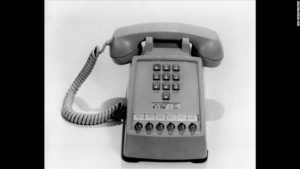
There are a lot of young folks out there who have never seen a rotary-dial phone. In fact, some have never heard a dial tone! That is a pretty amazing fact for those of us who can remember when touchtone phones, or push-button phones as we knew them, were a rare sight.
Rotary phones were the standard, and some of our homes had phones that dated back to the forties or fifties. After all, the phone belonged to the phone company, not us. We had them replaced if they broke. And they were amazingly reliable pieces of technology that simply didn’t break.
But seeing how the times were a-changing, the telephone technology itself was modernizing. In fact, entire generations can see quantum leaps of how we communicate by voice over wires. Our grandparents didn’t have phones. Our parents had to crank a handle to reach an operator, who would then connect them to the party they sought. We were spoiled, indeed, to merely dial a number.
Today, of course, our kids know about cell phones and VOIP. But touchtone phones were a big deal to us. It was so cool to hear tones play! Songbooks were even released, so we could make music while making calls that, if they connected, reached perfect strangers.
The first AT&T touchtone phones were introduced with ten numeric keys only in 1963. It took five years for the pound and star keys to show up.
Adoption was steady, but it took a long time for them to appear in some areas. My small town first offered them in the mid 70’s.
Nowadays, it’s probably been a while since you’ve called a business and heard a recorded voice say something like “if you have a touchtone phone, you may dial your extension now.” And rotary phones won’t even work on many phone companies’ lines any more.But once upon a time, the touchtone phone was new, cool, and hard to find.